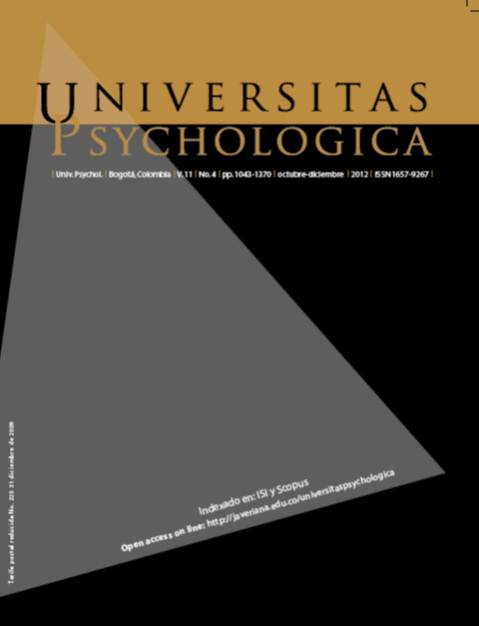Abstract
We studied the perceptions of interparental conflict and its long term effects on emotions, behaviours and cognitions in a sample of 510 Spanish adolescents. The instruments used were the Children’s Perception of Interparental Conflict Scale [CPIC] (Grych, Seid & Fincham, 1992) and the Security in the Family System Scale [SIFS] (Forman & Davies, 2005). CPIC evaluates the nature of conflict and its contextual variables. SIFS measures the security in the family system, the preoccupation and the disengagement of children. We have found that the more destructive interparental conflict happens (more intense, frequent and unsolved), more guilty, threatened, triangulized, worried and insecure children feel, more useless their attempts to solve parental problems are and more disengage from interparental disagreements. There are differences between single mother families and nuclear families. These depict that post divorce conflict has a great impact on children. In this case, it is more stable and parents are less efficient in solving it, so children feel more insecure. Our data show that, with age, there is an increase in children’s insecurity and that girls disengage more than boys when facing interparental conflict.
This journal is registered under a Creative Commons Attribution 4.0 International Public License. Thus, this work may be reproduced, distributed, and publicly shared in digital format, as long as the names of the authors and Pontificia Universidad Javeriana are acknowledged. Others are allowed to quote, adapt, transform, auto-archive, republish, and create based on this material, for any purpose (even commercial ones), provided the authorship is duly acknowledged, a link to the original work is provided, and it is specified if changes have been made. Pontificia Universidad Javeriana does not hold the rights of published works and the authors are solely responsible for the contents of their works; they keep the moral, intellectual, privacy, and publicity rights. Approving the intervention of the work (review, copy-editing, translation, layout) and the following outreach, are granted through an use license and not through an assignment of rights. This means the journal and Pontificia Universidad Javeriana cannot be held responsible for any ethical malpractice by the authors. As a consequence of the protection granted by the use license, the journal is not required to publish recantations or modify information already published, unless the errata stems from the editorial management process. Publishing contents in this journal does not generate royalties for contributors.


